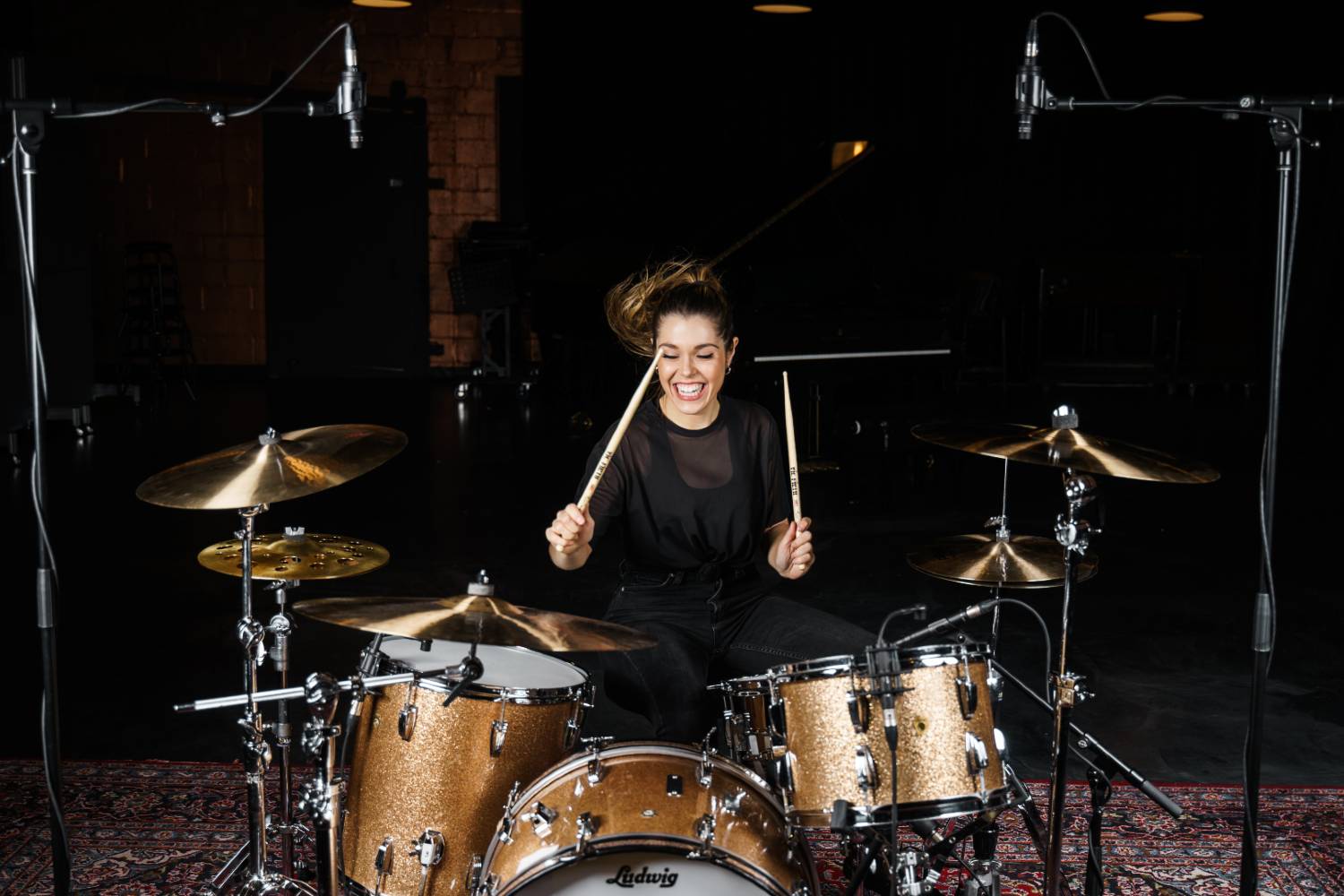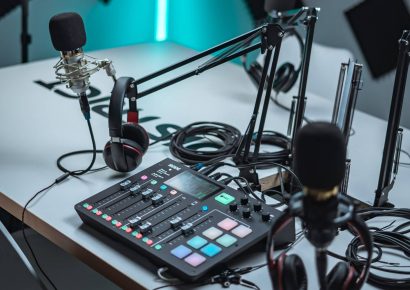Figure out which Beyerdynamic microphones suit your recording needs.
Looking to snag a set of mics to use with your drum-kit in the studio or on stage? Don’t fear – Beyerdynamic are here. To find out more about their TG microphone range, we chat with Kamal Mahtani (Sales and Marketing Director for APAC) to get the scoop on why the range is perfect for the needs of the modern drummer.
Read more features, columns and interviews here.
Beyerdynamic’s TG drum microphones are a tantalising offering for drummers, particularly when considering their pricing, compact design and tonal versatility. What was the primary design focus when the Beyer team went about creating these mics? Were there any particular influences or inspirations throughout this process?
The primary design focus was on the perfect sound and handling for their application; while giving them an updated look and feel to make them most appealing to users.
The influences and inspirations were from the users of our previous models. We had a long run with them and we inhaled everything our users had to say. The new models translate exceptional sound performance as per our previous microphones, while upgraded with sonic audio performance, materials and mounting features.
The appearance of units like the TGI51, TGD35D and TGD70 is quite different from that of most other microphones we’re used to seeing from Beyerdynamic. Why do these mics feature the aesthetic design that they do? Are there any sonic benefits from this?
The designs follow common shapes and form factors used in many other Beyerdynamic products. The lozenge-shaped opening is also found in products such as the FOX USB Microphone or the DT 1990 headphone. At the same time, the look and materials have been updated to match the microphones acoustic performance and the likings of modern music creators.
Expanding on the above, mics like the TG D57c and D58c both feature goosenecks and clip-on mounts, which really go the distance to make life easier for sound engineers or drummers setting up their own gear. Not many drum mic manufacturers opt for gooseneck designs today – why did Beyer choose to pursue this?
Well, if we couldn’t get it right, we would not have pursued this. We knew we had a great system to keep the mic in place. Gooseneck Designs can be challenging. Not every Gooseneck in the market provides optimal durability.
The mechanical design of the D57 and D58 proved to be very reliable over many years. The housing, capsules, and goosenecks are specifically designed for this application; hence delivering the best sound and performance from these microphones, recording after recording, saving studio time!
I noticed that the range consists of both dynamic and condenser transducer types. For those who mightn’t be familiar with these terms, can you explain what both transducer types are best suited for recording, and how that pertains to drumming in particular?
Dynamic microphones are more suited as a sturdier option for use on stage or for miking loud amplifiers or other loud instruments. You could drop it and it wouldn’t break. It would be best used for Snare, Kick and Toms in a live environment.
Condenser microphones on the other hand are sensitive microphones that require an additional 48v (Phantom Power) to power up. They are best suited for studio work where nuances need to be picked up easily and articulated in details. What’s interesting is our TG D71 which is Boundary Condenser Microphone for Kick Drums. It sounds crazy to shove a Condenser into a kick drum but this model clearly is a winner. Condensers on a drum kit would excel when placed on Hi-Hats, Toms, under a Snare, Beater and Over Heads. Our Snare/Tom mics TG D57c and 58c are condensers too. A real game changer.
Further to that, how do these microphones hold up when put to the test in a live setting? Are there any genres or applications that they really seem to shine in? What about when they’re used for other sound sources, like bass cabinets or horns?
Even though most of our drum mics are condenser microphones with the exception of the TG I51 and TG D70 which are dynamic, they hold up extremely well in a live setting.
The design of the capsule and cage aids in keeping the pick-up directional.
Our mics are versatile tools, some of these models are created with keeping in mind the utilitarian who would use them for bass, horns and other loud instruments. We keep them practical with multiple uses adding value to any microphone arsenal.
For a drummer who might be purchasing these microphones to record themselves with at home, what kind of tips or advice would you provide them with to make sure they achieve a quality sound within a less-than-ideal recording environment?
Putting microphones aside, the first thing I would suggest is to place the drum kit in the biggest room they have. Smaller rooms are harder to treat acoustically, bigger rooms are more forgiving. Get microphones that offer a clamp and a gooseneck, that gives you one less thing to worry about and neatens up the set up. It also offers consistency in sound with every recording.
Keep moving the mic around to get the optimum sound, but ensure its away from potential hits from sticks. Tune up the kit nicely and replace seasoned drum heads. Last but not least, a good pair of the trustworthy DT 770 M headphones, designed for drummers to monitor themselves with guide tracks.
Finally, what’s next up on the Beyerdynamic front? Do you have anything over the horizons you’re particularly excited about?
There sure is! We’ve got some exciting gear lined up, but I shall not spoil the surprise.
Apart from that I am most particularly excited about the “How-To Drums” Video we have put up recently for drummers to excel in their recording techniques at home.
Take a look at Beyerdynamic’s full range of drum mics here, for local enquiries get in touch with Synchronised Technologies,







